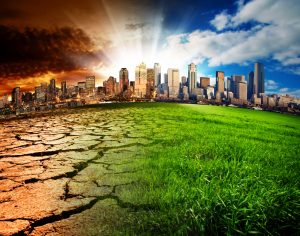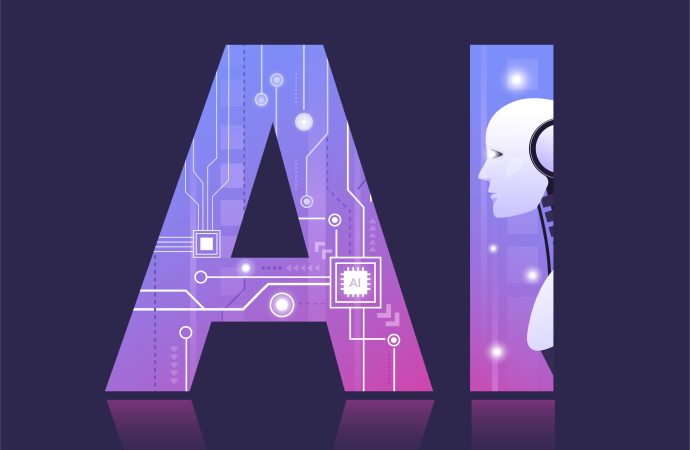The Paradox of AI: How Artificial Intelligence Can Help or Harm Climate Change Climate change is one of the most pressing challenges of our time, affecting every aspect of our lives and the planet. As the world seeks to mitigate and adapt to the impacts of global warming, artificial intelligence (AI) emerges as a powerful
The Paradox of AI: How Artificial Intelligence Can Help or Harm Climate Change
Climate change is one of the most pressing challenges of our time, affecting every aspect of our lives and the planet. As the world seeks to mitigate and adapt to the impacts of global warming, artificial intelligence (AI) emerges as a powerful tool that can help or harm our efforts. AI is the branch of computer science that deals with creating machines or systems that can perform tasks that normally require human intelligence, such as learning, reasoning, and decision making. AI has the potential to transform various sectors and domains, from health care and education to agriculture and transportation. But how does AI relate to climate change? And what are the paradoxical effects of AI on the environment and society?
In this article, I will explore the contradictory role of AI in climate change, both as a solution and a problem. I will discuss how AI can help reduce greenhouse gas emissions, improve weather predictions, and design greener technologies. I will also examine how AI can increase energy consumption, create environmental impacts, and exacerbate social issues. I am a seasoned blog writer who is interested in exploring the intersection of technology and sustainability. I have a background in computer science and environmental studies, and I have been following the latest developments and research in AI and climate change. I hope to share with you some of the insights and implications that I have learned from my sources, which are listed at the end of the article.

Image by: https://news.utexas.edu/
How AI Can Help Fight Climate Change
One of the ways that AI can help fight climate change is by reducing greenhouse gas emissions, which are the main cause of global warming. AI can help optimize energy use in buildings, improve power storage, and feed solar and wind power into the grid. These applications can help lower the carbon footprint of various sectors and activities, such as heating, cooling, lighting, and transportation.
For example, Google has used AI to reduce the energy consumption of its data centers by 40%. The company has developed a deep neural network that can learn from historical data and predict the optimal settings for cooling systems, fans, and windows. The system can also adjust to changing weather conditions and user demand, resulting in significant energy savings and emission reductions.
Another example is Tesla, which has used AI to improve the performance and efficiency of its electric vehicles and batteries. The company has used machine learning to analyze data from millions of miles driven by its customers and optimize the software and hardware of its cars. The company has also used AI to design and manufacture new battery cells that can store more energy, last longer, and cost less.
A third example is DeepMind, which has used AI to enhance the integration of renewable energy sources into the grid. The company has developed a reinforcement learning algorithm that can learn from weather forecasts and historical data and predict the optimal amount of solar and wind power to generate and distribute. The system can also balance the supply and demand of electricity, ensuring reliability and stability.
How AI Can Improve Weather Predictions
Another way that AI can help fight climate change is by improving weather predictions, which are essential for understanding and anticipating the impacts of global warming. AI can help analyze large-scale models and complex data sets that are generated by the field of climate modeling, which simulates the physical processes and interactions of the atmosphere, ocean, land, and ice. AI can help unlock new insights from these simulations, which can improve long-term forecasts and inform policy and planning decisions.
For example, IBM has used AI to enhance the accuracy and resolution of its weather prediction system, called GRAF. The system uses machine learning to assimilate data from various sources, such as satellites, radars, sensors, and smartphones. The system can also generate high-resolution forecasts for any location in the world, up to 12 hours in advance.
Another example is Microsoft, which has used AI to improve the representation of clouds in climate models, which are crucial for estimating the feedback effects of clouds on global warming. The company has used deep learning to train a neural network that can learn from observational data and simulate the behavior and dynamics of clouds. The network can also replace the traditional parameterizations of clouds, which are often based on simplifying assumptions and empirical formulas.
A third example is NCAR, which has used AI to improve the detection and attribution of extreme weather events, such as heat waves, droughts, and floods. The center has used machine learning to identify the patterns and fingerprints of these events and their causal factors, such as greenhouse gas emissions, natural variability, and human activities. The center has also used AI to quantify the likelihood and magnitude of these events and their impacts on society and the environment.

Image by: https://www.careelite.de/
How AI Can Design Greener Technologies
A third way that AI can help fight climate change is by designing greener technologies, which can help reduce the environmental impact of various products and processes. AI can help discover new materials, create low-carbon products, and enhance renewable energy sources. These applications can help foster innovation and sustainability in various domains, such as manufacturing, construction, and agriculture.
For example, MIT has used AI to design a new material that can capture carbon dioxide from the air and store it as a solid. The material is made of a metal-organic framework that can selectively absorb carbon dioxide molecules and release them when heated. The material can also be used to create bricks, tiles, and other building materials.
Another example is Adidas, which has used AI to create a new shoe that is made of recycled plastic waste. The shoe is part of the company’s initiative to eliminate virgin plastic from its products and supply chain. The company has used machine learning to analyze data from its customers and design a shoe that can fit their preferences and needs.
A third example is NREL, which has used AI to enhance the efficiency and reliability of solar panels. The laboratory has used machine learning to optimize the design and placement of solar cells, which can convert sunlight into electricity. The laboratory has also used AI to monitor and diagnose the performance and health of solar panels, which can prevent failures and losses.

Picture by: https://www.jonesday.com/en/insights/2023/02/us-and-eu-enter-ai-collaboration-agreement
How AI Can Increase Energy Consumption
While AI can help fight climate change in many ways, it can also be a source of the problem. One of the ways that AI can harm climate change is by increasing energy consumption, which can contribute to greenhouse gas emissions and global warming. AI can be highly energy-intensive and environmentally damaging, as it requires a lot of computational power and data processing to develop, train, and run algorithms.
For example, OpenAI has estimated that the amount of energy required to train a large-scale deep neural network can be more than 300,000 times the amount of energy required to read a book. The energy consumption of AI can also grow exponentially as the complexity and size of the models and data sets increase. The energy consumption of AI can also vary depending on the type and location of the hardware and software used.
Another example is Bitcoin, which has used AI to secure and validate its transactions, called mining. The mining process involves solving complex mathematical problems using specialized hardware and software, which can consume a lot of electricity. The electricity consumption of Bitcoin can also fluctuate depending on the difficulty and demand of the mining process. The electricity consumption of Bitcoin can also depend on the source and cost of the electricity used.
A third example is Facebook, which has used AI to personalize and optimize its content and services, such as news feed, ads, and recommendations. The personalization and optimization process involves analyzing and processing large amounts of data from its users and partners, which can consume a lot of energy. The energy consumption of Facebook can also increase as the number and diversity of its users and services grow. The energy consumption of Facebook can also vary depending on the efficiency and location of its data centers and servers.
How AI Can Create Environmental Impacts
Another way that AI can harm climate change is by creating environmental impacts, which can affect the quality and availability of natural resources and ecosystems. AI can generate waste from hardware components, consume natural resources from data centers, and emit greenhouse gases from data centers. These impacts can have negative consequences for the environment and society, such as pollution, depletion, and degradation.
For example, Greenpeace has reported that the global e-waste generation from electronic devices, such as computers, smartphones, and tablets, has reached 53.6 million metric tons in 2019, and is expected to grow by 38% by 2030. The e-waste generation from AI can also increase as the demand and turnover of hardware and software increase. The e-waste generation from AI can also pose risks for human health and the environment, as it can contain toxic and hazardous substances, such as lead, mercury, and cadmium.
Another example is Nature, which has estimated that the global water consumption from data centers, which are the facilities that house and power the servers and networks that run AI applications, has reached 198 billion liters in 2018, and is expected to grow by 95% by 2030. The water consumption from AI can also increase as the cooling and cleaning needs of data centers increase. The water consumption from AI can also affect the availability and quality of water resources, especially in water-scarce regions.
A third example is Carbon Brief, which has calculated that the global carbon dioxide emissions from data centers, which are the main source of greenhouse gas emissions from AI, have reached 200 million metric tons in 2018, and are expected to grow by 6% by 2030. The carbon dioxide emissions from AI can also increase as the energy demand and supply of data centers increase. The carbon dioxide emissions from AI can also contribute to global warming and climate change, which can have adverse effects on the environment
How AI Can Exacerbate Social Issues
A third way that AI can harm climate change is by exacerbating social issues, which can affect the well-being and rights of individuals and groups. AI can influence consumer behavior through advertising systems or self-driving cars; create ethical dilemmas through facial recognition or autonomous weapons; or widen social inequalities through digital divide or job displacement. These impacts can have negative consequences for society and the environment, such as consumption, conflict, and injustice.
For example, The Guardian has reported that the global online advertising industry, which uses AI to target and personalize ads to consumers, has reached $333 billion in 2019, and is expected to grow by 10% by 2030. The online advertising industry can also influence consumer behavior and preferences, which can affect their consumption patterns and environmental footprints. The online advertising industry can also pose risks for consumer privacy and security, as it can collect and use personal data without consent or transparency.
Another example is The New York Times, which has reported that the global military spending on AI, which uses AI to enhance and automate weapons and warfare, has reached $18 billion in 2019, and is expected to grow by 12% by 2030. The military spending on AI can also create ethical dilemmas and challenges, such as the accountability and responsibility of using AI in lethal decisions, the human dignity and rights of the targets and victims, and the escalation and proliferation of conflicts and violence.
A third example is The World Bank, which has reported that the global digital divide, which is the gap between those who have access and skills to use AI and those who do not, has reached 3.6 billion people in 2019, and is expected to grow by 5% by 2030. The digital divide can also widen social inequalities and disparities, such as the access and quality of education, health care, and employment opportunities. The digital divide can also affect the participation and representation of marginalized and vulnerable groups in the development and governance of AI.
Conclusion
In conclusion, AI can play a paradoxical role in climate change, both as a solution and a problem. AI can help reduce greenhouse gas emissions, improve weather predictions, and design greener technologies. However, AI can also increase energy consumption, create environmental impacts, and exacerbate social issues. These effects can have significant implications for the environment and society, both in the present and in the future.
Therefore, it is important to address these challenges and harness these opportunities, by developing and deploying AI in a responsible and sustainable manner. Some of the possible ways to do this are:
- Adopting ethical principles and standards for AI, such as fairness, transparency, accountability, and human dignity.
- Implementing environmental policies and regulations for AI, such as carbon taxes, energy efficiency, and waste management.
- Promoting social inclusion and empowerment for AI, such as digital literacy, access, and participation.
By doing so, we can ensure that AI can be a force for good, rather than evil, for climate change and the world.

















Leave a Comment
Your email address will not be published. Required fields are marked with *